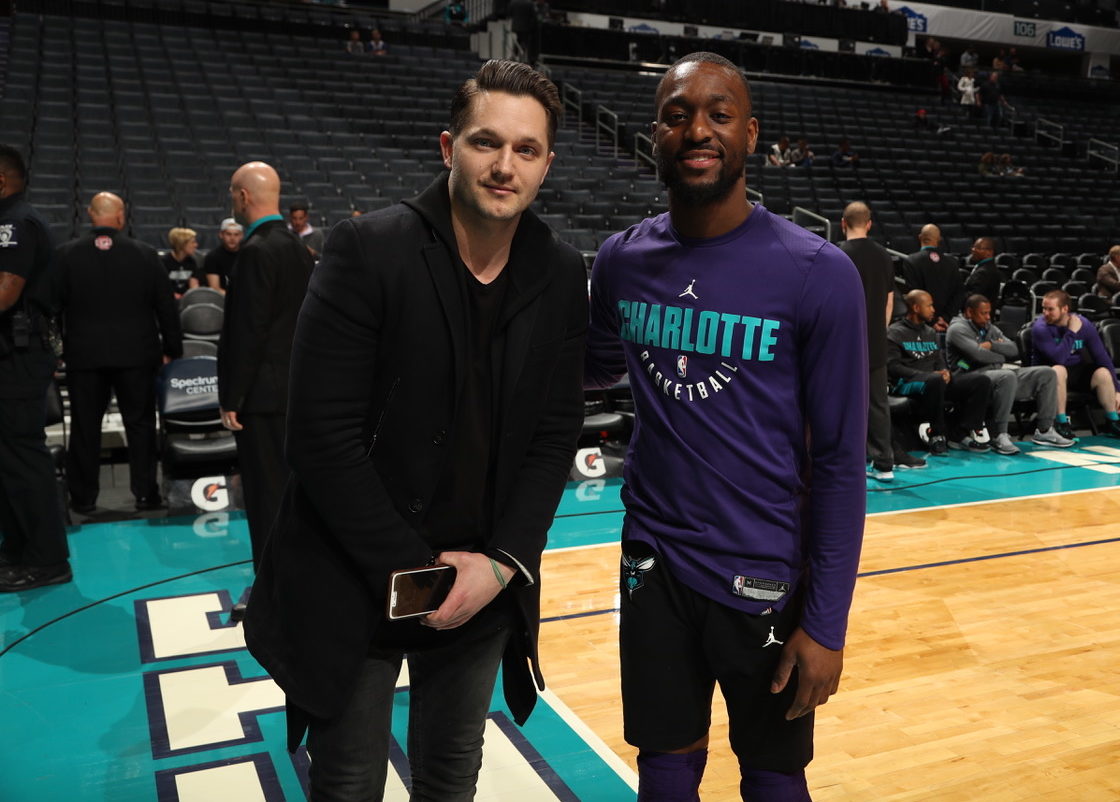
Former Pro Baller and Rucker Star Nearly Made the NBA—Now They Wear His Sneakers
LOS ANGELES -- The best nicknames are the ones that stick—sometimes, better than even birth names.
Ask Baron Davis about Brian Kortovich, and he just might draw a blank. But tell the two-time NBA All-Star you want to talk about Smokin’ Aces, and he’ll snap to attention.
“You don't meet a stranger when you meet him, you know what I mean?” Baron tells CloseUp360 inside the gym at Alexander Hamilton High School in Los Angeles, after hosting his third annual Black Santa Celebrity Game. “And he's, like, a hooper's hooper.”
Brian made that much clear during the game itself. Amid the flash and flare of NBA veterans like Baron, Nick Young and J.R. Smith on the court, it’s Brian who emerged as the MVP, draining jumpers and dropping dimes for the victorious South Pole squad.
“Game recognize game,” Brian says, when told of Baron’s acclaim, “and he understands that I played at a high level, did some things in New York City in the pro-ams, and earned that nickname in the streets. So I think he respected the game, but also the hustle to get to the point where I’m at now.”
Where Brian is now is, in some respects, in the quiet eye of a surrounding basketball storm. He’s close with some of the NBA’s biggest stars, from Kevin Durant to Carmelo Anthony. He’s played pickup with LeBron James and thrown lobs to Dwyane Wade. He’s led the EBC Rucker Park League in scoring—as a 6’1” white guy from Northeast Ohio, no less. He’s put his own logo on sneakers sported in NBA games by Mike Conley Jr., Kemba Walker and P.J. Tucker, and on jerseys worn by celebrities like Justin Bieber, Snoop Dogg and DJ Khaled. Over All-Star Weekend in Chicago, he outfitted rapper Quavo and Los Angeles Lakers assistant coach Phil Handy with fresh kicks.
Brian has done it all with a combination of heart, hustle and determination to overcome the odds that belies his adopted identity as the best card in the deck.

Brian Kortovich customized sneakers that rapper Quavo wore in last weekend's NBA All-Star Celebrity Game. (Ben Barry)
To find the origin of Smokin’ Aces, you have to go back to Brian’s breakout game at Rucker Park in 2009. But to understand why Brian was at the Rucker in the first place, you have to travel to Brunswick, Ohio, in the early 1990s.
Life wasn’t always easy in the Kortovich household. Brian’s father, Joseph, worked three jobs. For a time, his mother, Laural, separated from his dad.
“But through that separation,” Brian says, “I would always go visit him and we would always talk about life, getting the family back together and basketball. I just missed having a dad in my life.”
Sports kept father and son connected. Joseph would dress his son in apparel from his favorite team (the Oakland A’s). And though Joseph was more of a baseball player in his youth and never hooped at any particular level, he showed young Brian whatever basketball moves he could. The best was a hook shot that sent the ball swishing through the net seemingly every time.
Until one time, when Brian was nine, “he couldn't get it like two feet and he made this big loud noise,” Brian recalls. “I'm, like, ‘Pops, you might wanna go get that checked out.’”
Joseph was hard-headed at first, but eventually submitted to tests. The doctors found a large tumor that had spread throughout his organs.
“They tried to catch it,” Brian says. “It was too late.”
Ten days later, Joseph’s cancer had metastasized into a massive tumor. Twenty days after that, he was gone, dead from appendix cancer at the age of 42.
The next day, Brian had to go back to school for the start of fifth grade. To cope with the intense emotions of the moment, he wrote down a list of 25 goals inspired by his parents.
The first half of the list—which Brian describes now as “hilarious”—consisted of milestones both immediate and amorphous.
Get straight A’s. Have confidence. Never give up. Be good to your mom.
The second half of Brian’s list was littered with long-term goals, most of which were tied to basketball.
Division I scholarship. Play at Rucker Park. Land an NBA contract.
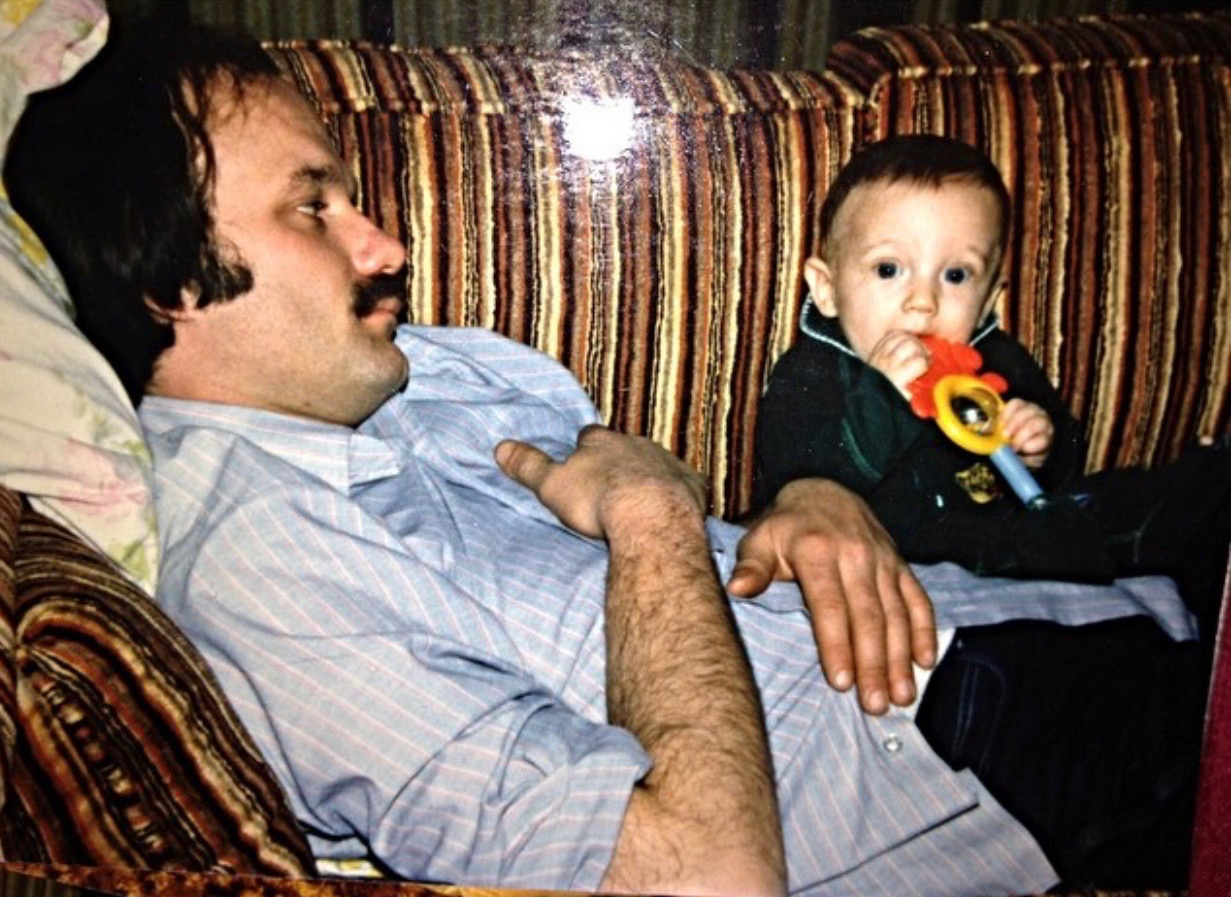
Brian (right) with his father, Joseph. (Courtesy of Brian Kortovich)
With his father gone, the court became Brian’s sanctuary. It was just him, the ball and the rim. And without his dad there to teach him that hook shot, Brian sought examples for his own game. He honed his shooting by mimicking that of Mark Price, who was an All-Star for the nearby Cleveland Cavaliers. To improve his on-ball skills, he studied the passing and dribbling wizardry of Jason Williams, also known as “White Chocolate.”
“Instead of being depressed, for some reason, when I touched that basketball, I had no worries in the world,” Brian says. “So it was just, like, a therapeutic release became a lifelong passion and a promise that I made to honor my father through the game.
“And then when you practice every single day because you know that's like your saving grace, you just become really good at it.”
Brian, though, faced difficulties showcasing his game. With his ability to shoot, dribble and pass, he emerged as an intriguing young talent through his first three years at Holy Name High School in Parma Heights, but sought a bigger stage at nearby Brunswick High School. Once there, he underwhelmed as a senior amid soaring expectations, while attempting to adapt to an unfamiliar environment.
“I just put too much pressure on myself,” he says.
What’s more, Brian didn’t draw much attention on the travel circuit with a program called Shooting Stars.
“AAU wasn’t popping in Ohio like that,” he says.
Without any enticing scholarship offers and with a goal to play Division I ball, Brian matriculated to Cuyahoga Community College in Cleveland. There, he played for Jon Walker—a former teammate of Charles Oakley’s at Virginia Union and backup to Chris Jackson (later known as Mahmoud Abdul-Rauf) in the NBA—and alongside two former Mr. Ohio’s: Kamil Wilson and Marvin Rashad. By teaming up with some of the top players in his home state, Brian found that he belonged.
So did the coaches who came to scout Tri-C. Even those looking to recruit Kamil and Marvin couldn’t help but notice Brian. He led the National Junior College Athletic Association (NJCAA) with more than 130 made three-pointers—including 13 in one game against JUCO powerhouse Allegany College of Maryland—and set school records for three-point and free-throw shooting.
That success helped Brian land a coveted Division I scholarship to Manhattan College in the Bronx. He arrived as a redshirt, and soon learned that due to recruiting problems and issues beyond his control, he was forced to leave the program. So after his first semester in New York City, Brian transferred again—this time to California University of Pennsylvania, a Division II school that had recruited him out of junior college.
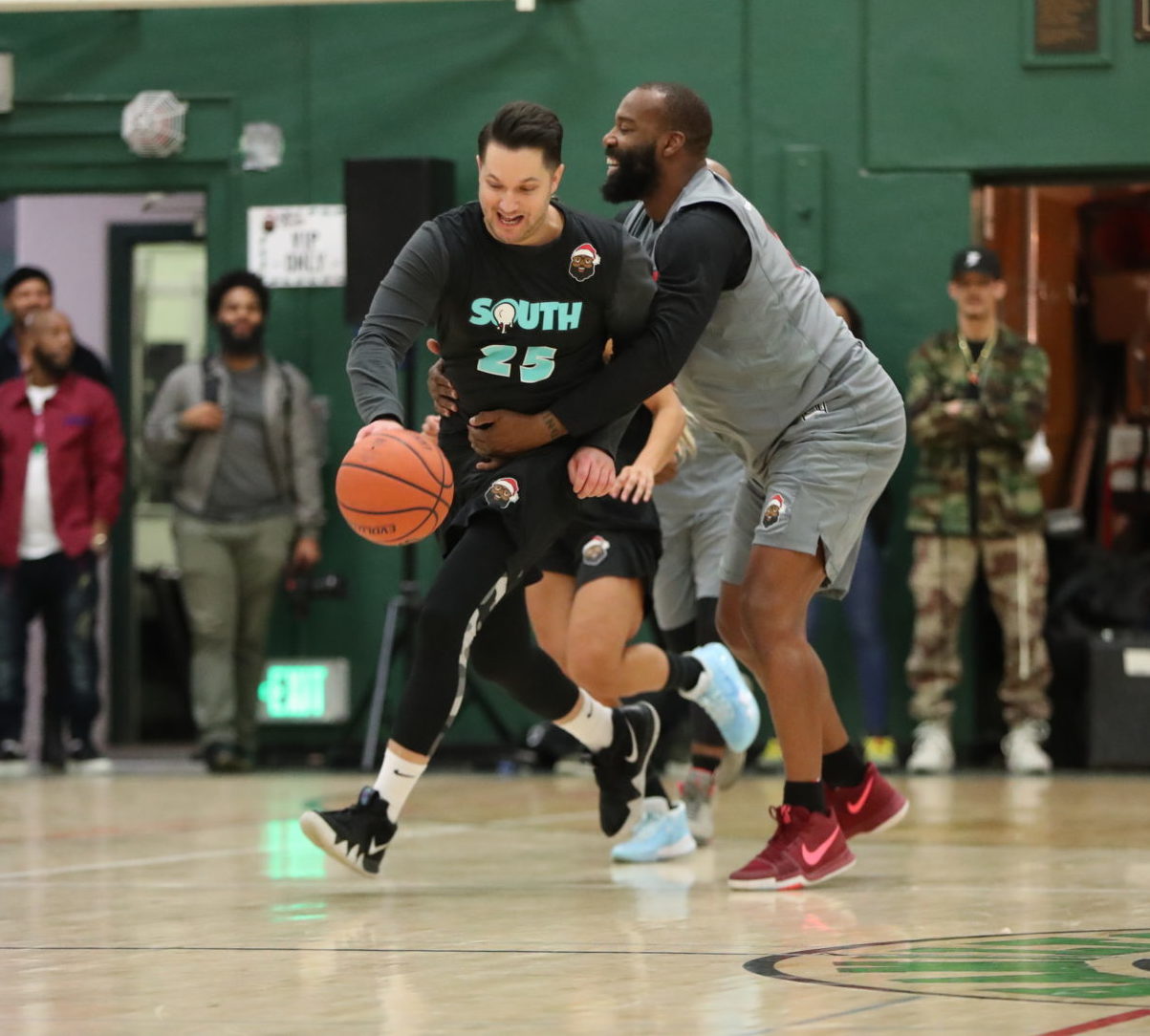
Brian could ball, long before he was named the MVP of Baron Davis' Black Santa Celebrity Basketball Game. (David Chisholm)
After a left knee injury and another transfer, to Urbana University in Ohio, Brian reinjured the same knee in a freak accident during his first game there. With that, he closed out his college basketball career with 11 total minutes played and no noteworthy stats or game film to attract proper basketball representation, let alone a pro opportunity anywhere.
"Let's be real: 99 percent of humans would've given up after that," he says, "but my love of the game and my abilities drove me to overcome that as well."
Playing pickup with LeBron in Akron, shortly after the Cavs took the local prep phenom atop the 2003 NBA draft, was a nice feather in Brian's cap, but was hardly enough to land him a job. He did, however, have a few things going for him. He had the business degree he’d earned from Urbana and the affable manner he brought to all situations in his life.
And, despite his injuries, Brian could still ball. Even without much of a tangible resume to market his on-court services, he was determined to play the game he loved at the highest level.
So, with $200 in his pocket, Brian moved to New York City. There, he did what any dream chaser would: he hustled.
“I knew I had to take a shot in life,” he says, “and I needed a job. Can't live there on someone's couch. You've got to freakin' work.”
By day, Brian quoted commodities on the New York Mercantile Exchange and the Chicago Board of Trade. By night, he was hooping wherever he could: Dyckman Park in Inwood, the West 4th Street Courts (a.k.a. “The Cage”) in Greenwich Village, the Rucker in Harlem. He was less concerned with making a name for himself than with gathering game film to send to his agent, Jim Dod, in Cleveland, who could use those clips to sell his client to teams overseas.
One day, in 2008, Brian was working the floor at NYMEX when he got a call from Jim. His agent had found him a gig.
“Spain? Italy?” Brian asked.
“No,” Jim replied. “Kuwait.”
“I'm thinking, Iraq War?” Brian says now. “What's going on here?”
But Brian didn’t sulk. Instead, he did his research. He found that Kuwait had become a haven for some of New York City’s most renowned hoopers, including God Shammgod and Kenny Satterfield.
Brian, though, didn’t have the NBA bona fides that those two brought to the table.
“Humbly, I wasn't making what they were making,” Brian says. “I got a few grand a month, but you know what? I knew I had to start somewhere.”
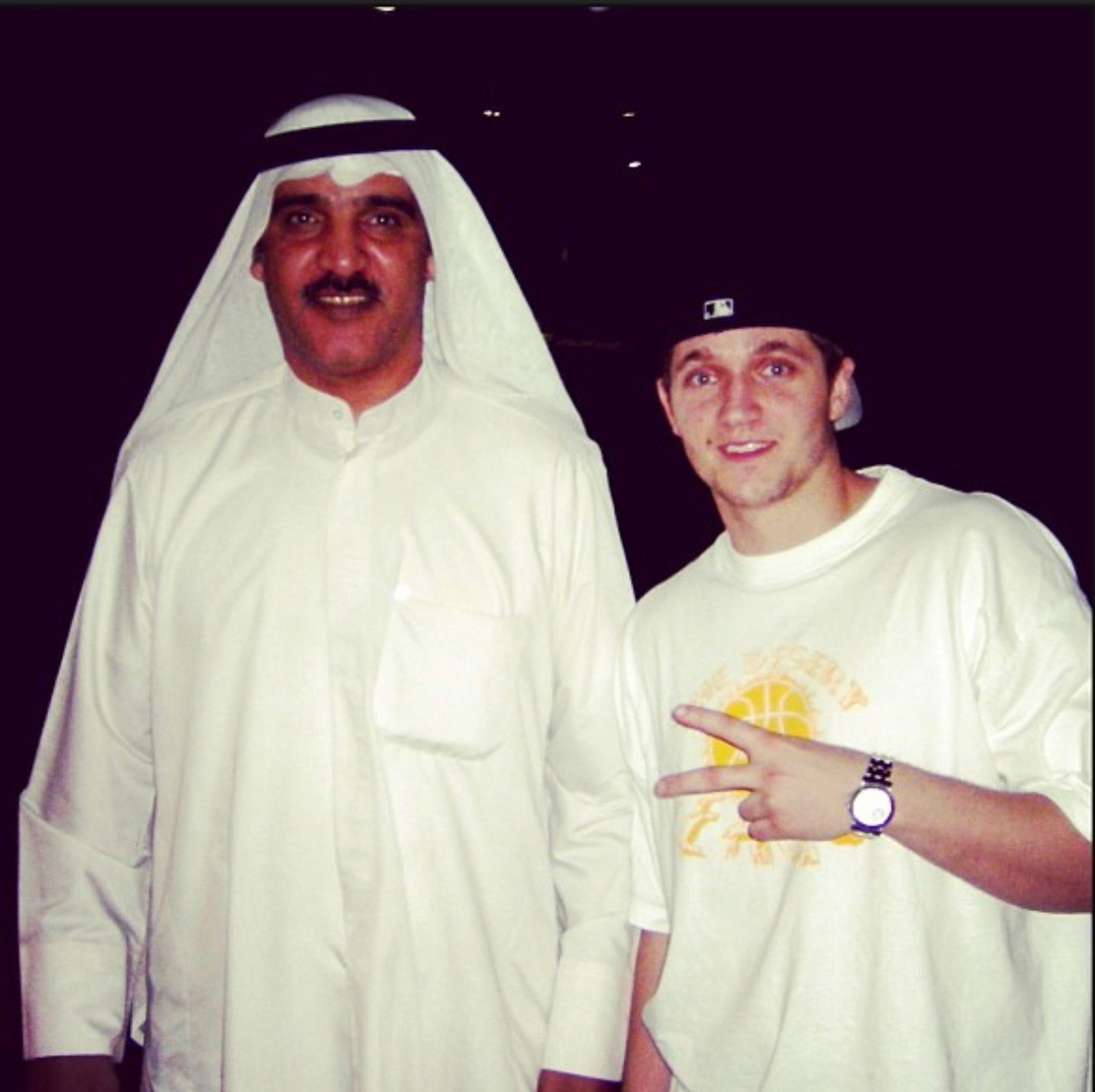
Brian with the team president of Al Sahel in Kuwait in 2008. (Courtesy of Brian Kortovich)
The move to Kuwait brought on plenty of culture shock for Brian. The food, the clothes, the customs—everything was new to him. But he wasn’t deterred (or even distracted) by his unfamiliar surroundings. Instead, he focused on why he was in the Persian Gulf: to play basketball.
“I had blinders on,” he says.
During the 2008-09 season with Al Sahel, Brian led all Americans in the Kuwaiti Division I Basketball League in scoring at 22 points per game. His success there begat an opportunity in France with Feurs Enfants du Forez, which led to a tryout in Italy and stints in Israel and the Dominican Republic.
For all that Brian was achieving overseas, he still had to hustle for opportunities in the States. He wanted to play at the Rucker, and was confident that his skills as a shooter and passer would translate.
Trouble is, he didn’t look the part. And coming out of Northeast Ohio, he lacked the lifelong relationships on the scene to get picked up by a team.
“Walking up with a duffel bag from Wall Street, the guys kind of looked at me and laughed,” he says.
Still, Brian showed up, time and again, to make his case for a spot. He hit up Greg Marius, the late founder of the EBC Rucker Park, every which way he could, pinging him with e-mails and practically pleading for a shot.
“He saw my heart. He saw my eyes. And I sent him some game film, so he knew I could play,” Brian says. “But he wanted me to earn it. Greg was an iconic figure in the basketball community in New York City. Rest in peace, brother."
Finally, in the summer of 2009, Greg gave Brian his chance. The team? Black Wall Street.
“Can't make this shit up,” Brian says.
Getting on a roster at the Rucker hardly guaranteed playing time. Through his first three games, Brian barely got off the bench. He didn’t complain, though he couldn’t help but wonder why a triple threat like himself wasn’t getting any run.
Finally, Brian caught a break. One of Black Wall Street’s starters, a guard named Charles Jones, showed up late to the fourth game. The coach, James Ryan, gave Brian the nod. His chief opponent? White Chocolate.
“I started just balling and balling and balling,” Brian says.
The MCs at Rucker, Jeffrey “Hannibal” Banks and E.J. “The Mayor” Johnson, began by ragging on Brian for his pale complexion.
Nick Lachey. Brian’s Song.
“Anything you can think of—any white name they could clown me with,” he says. “But, hey, it's their hood. It didn't matter.”
It certainly didn’t stop Brian from getting buckets. By halftime, he was deeply into double digits in scoring. Come the fourth quarter, the MCs promised him a proper nickname if he hit another shot.
The ball came Brian’s way. The court cleared for him to go one-on-one. He took a quick in-and-out dribble, stepped back and drained a three to bring his total to 42.
“Smokin’ Aces in the building!” Hannibal shouted.
Brian walked off the blacktop with a win, a nickname and a question for the MCs: Why Smokin’ Aces?
“Because an ace is the best,” Hannibal explained, “and you're smokin' the brothers.”
Brian spent the rest of the afternoon walking the 40 blocks back to his apartment in South Harlem. Along the way, he was cooing over the phone to his friends and family back in Cleveland about what he’d done.
“They didn't believe me,” he says.
That is, until his name showed up in SLAM magazine, under the headline “Trip’ Aces.”
That notoriety got him all the playing time he could handle at just about any run in the city. He became a regular at Chelsea Piers and won a three-point shooting contest at Dyckman. He kept balling out at the Rucker, too. His photogeneity and ability to hit shots under pressure drew attention from a local casting studio for a part in Just Wright, starring the rapper Common, as a competitor in a scrimmage with NBA stars.
“I'm on Dwyane Wade's team playing against Dwight Howard and them,” Brian says. “I'm throwing lobs to Dwyane Wade, literally.”
That led to Brian serving as Chris Evans’ body double in What’s Your Number? and, later, as Bill Hader’s stand-in on the set of Trainwreck, where he reunited with LeBron more than a decade after playing pickup against his fellow Ohioan.
“Smokin' Aces, it was just as big as getting to training camp or an invite to the NBA,” Brian says.
Those came, too. He competed in preseason camps with both the New York Knicks and then-New Jersey Nets in 2009 and 2010, earning praise from people in both organizations.
“Brian is a lights-out shooter and has a great understanding of the game,” Dan D’Antoni, then an assistant coach under his brother Mike D’Antoni in New York, told DIME in 2011. “He has been overlooked for whatever reason. He can play in the NBA and proved it against our guys. There’s a spot for Brian on every NBA roster.”
“Brian is an extremely hard-worker who can really shoot the basketball with the best of them,” then-Nets assistant coach Sam Mitchell said. “He can definitely be an asset to teams at the NBA level.”
But those auditions didn’t yield an NBA contract. In November 2009, the Albuquerque Thunderbirds took him with the 128th and final pick in the then-D League draft. He didn’t survive the roster cuts there either.
So Brian found other ways to scratch his hoops itch while paying the bills. He played in the American Professional Basketball League and, in 2012, joined the AND1 Live Tour.
All the while, Brian hustled. He worked multiple jobs—from running a basketball training business with clients ranging from high school hoopers and collegians to pros and celebrities, to bartending on weekends.
He also continued to rain fire across the courts of New York City. In 2012, he became the “first white guy,” as he puts it, to lead the Rucker in scoring at more than 35 points per game. That distinction landed him a sneaker deal with the AND1 in April 2013.

Brian's sneaker with AND1. (Courtesy of AND1)
Whenever he could, Brian found other ways to get himself in front of NBA eyeballs, to keep his dream alive. He would attend Knicks games on invitations from the likes of Landry Fields and Tyson Chandler. In the summers, he would hang around the team’s training facility in Tarrytown to support New York’s basketball camps for kids—and to get in some work of his own.
“Oh, he could shoot it,” says Steve Novak, who played for the Knicks from 2011-13 and got to know Brian during that time.
Steve, who led the NBA in three-point percentage during the 2011-12 season, saw first-hand how deadly Brian was from deep. During one drill, in particular, the two of them shot from five spots around the arc in three rounds. First, they had to drain three-of-five attempts from each location. Then, four-of-five. Then, five-of-five.
“Some guys will literally never be able to finish a drill like that,” says Steve, who’s now a broadcaster for the Milwaukee Bucks, “and I think Brian and I both were able to wrap it up pretty quick.
“I think that was when I realized, Alright, this guy, he can shoot it, because that's a drill I had done many times during different seasons with a lot of guys that were in the league, and they just had no chance at even coming close to finishing the last 5-for-5s.”
Brian kept shooting his shot for anyone to see. In the summer of 2012, he networked his way into the NBA runs at the famed Impact Basketball gym in Las Vegas while players, coaches, scouts and executives were in town for Summer League. He parlayed strong performances in those scrimmages into a spot in a free-agent workout that was intended, mainly, to get Rashard Lewis an audience with the Knicks, Los Angeles Lakers and Miami Heat. That opportunity didn’t land him an NBA audition of his own, though Brian showed enough to gain the support of Rashard’s agent, Tony Dutt.
Shortly thereafter, Brian headed back to New York on a high. He was drawing interest from multiple NBA teams—not just for offseason camps, but Summer League, where he’d get to play in front of most of the Association all at once. He was due to work out with Kevin Durant, courtesy of a connection made by their mutual friend, the renowned pastor Carl Lentz of Hillsong Church. Brian and Carl worked in tandem to put together the Hillsong Hustlers, a star-studded Rucker squad that would include KD, Scott Machado, Kent Bazemore, Landry Fields, David Lee and Jay Williams. This marked the first time in the history of the Rucker that a team would feature an all-NBA starting lineup.
Once again, Brian was on the brink of landing an NBA contract. This time, he would complete that list of 25 goals that fifth-grade Brian put together.
Then, in an instant, everything changed.
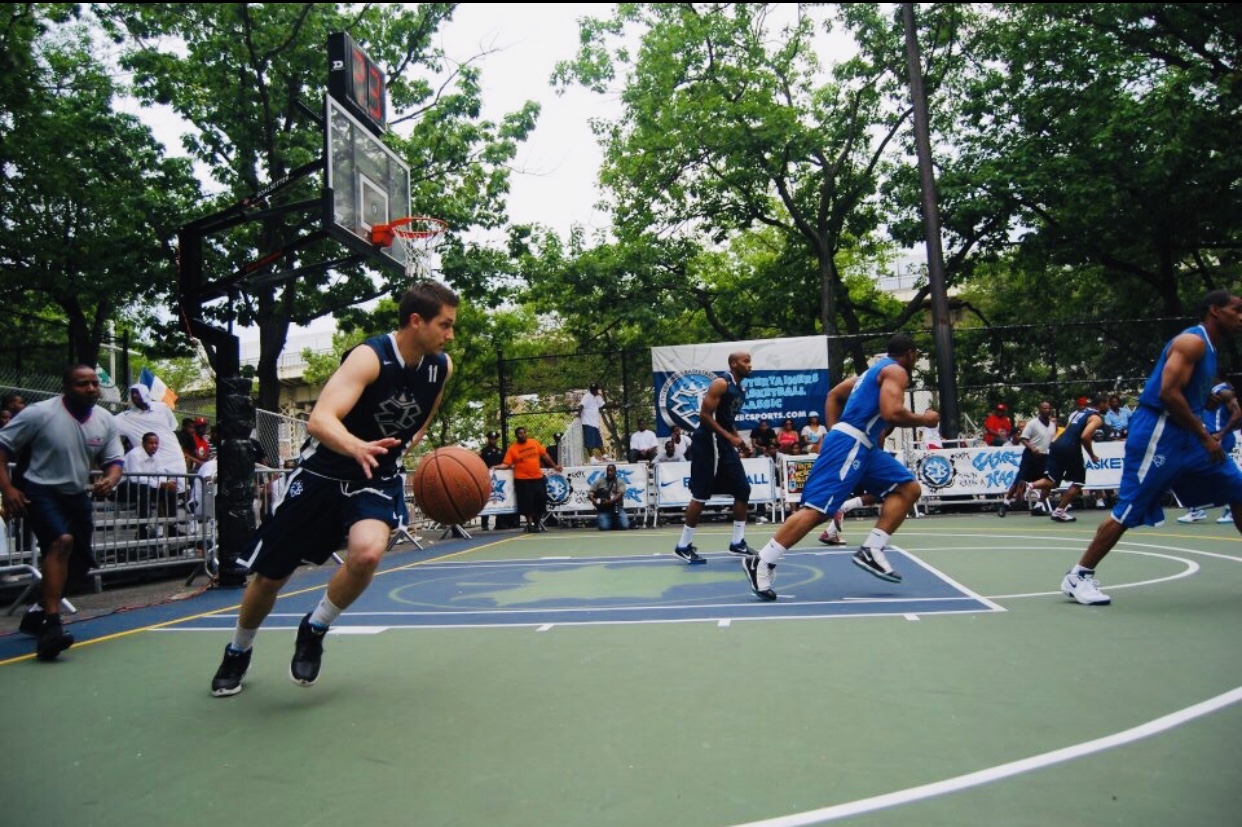
Brian led the EBC Rucker Park League in scoring in 2012. (Courtesy of EBC Rucker Park)
On June 25, 2013, Brian awoke to a video message on his phone.
“What’s up, man. This is KD.”
Earlier that day, Brian had been balling out, with his usual bravado, on the blacktop at West 4th Street. While jogging up the court, he felt a snap in his right foot. He subbed out and told those around him that he thought he’d sprained his ankle.
In truth, Brian knew it was much worse than that.
The diagnosis: a ruptured Achilles tendon. Forget working out with KD or running with the Hillsong Hustlers. In all likelihood, Brian's NBA prospects had vanished, too.
“I was done,” he says. “It was devastating because I was, like, ‘Really? Why? Why now?’”
Amid that cloud of questions, confusion and disappointment came the message from KD. As he laid in his hospital bed, still numb from surgery, Brian took in the superstar’s words of encouragement.
That this setback would make him a better person in the long run. That he would inspire people with his story. That Kevin looked forward to meeting him and would make himself available to Brian.
"Kevin's support during the setback got me through those difficult early days," Brian says.
Stuck in that hospital bed, Brian had all the time in the world to ponder KD’s words and plot his next move. He could sulk about how his NBA dreams had been dashed, how his deal with AND1 would likely come to an end. Or, he could heed Kevin’s suggestion and use his Sisyphean experience to inspire others by creating a platform for storytelling.
That’s when Brian thought of his nickname. No injury could take away Smokin’ Aces, or the geometric spade logo from his AND1 shoe. But what more could he do with those markers?
“I wanted to change this into a journey that everyone can relate to,” he says. “Hustle, heart, overcome the odds. That universal connectivity.”
He started with the logo. Brian’s mind then turned to his father, and all the Oakland A’s gear Joseph had given him as a child, even after he got sick. The hats, the pennants—they all had that simple but iconic A’s logo.
What if, Brian thought, I dropped the A and replaced it with the spade?
Brian sketched out his idea and gave that, along with one of his old A’s hats, to a designer in Brooklyn named Jordan Wagner.
“He came back with like 15 or 20 logos,” Brian says.
Brian narrowed the choice to three designs. Jordan took Brian’s notes and returned with a final set of options.
“Right when I saw it, I circled it and called him right away,” Brian recalls. “I was, like, ‘How much for that? Give me all the vectors. Here's the invoice, there's your money.’”
With his logo secured, Brian turned his attention to a name for the brand. He knew his nickname would be involved, but shortening it to “Aces” would hit closer to the message he wanted to send.
“I wanted to drop Smokin' to make [the name] universal to everyone: the doctor, to the kid, to the person who was just trying to dream big and overcome something,” he says. “If you have a great logo and you have a great, authentic story and you organically build it out over time, I think it'll resonate with people.”

Brian started thinking about ACES as a brand after rupturing his Achilles in 2013. (Ben Draper)
Two weeks after surgery, Brian was back on a basketball court.
Not playing—he was still many months away from that—but coaching. With crutches tucked into his armpits, Brian stood alongside Carl at the Rucker as they guided the Hillsong Hustlers.
There, Brian and Kevin finally met, and formed a bond that carried into the 2013-14 NBA season. The two traded calls, texts and Bible verses as KD embarked on an MVP campaign with the Oklahoma City Thunder and Brian endured multiple rehab sessions per day.
“When you're up on your feet, come to OKC,” Kevin told him. “We'll have dinner. We'll hang.”
Six months after surgery, Brian was cleared to fly. In January 2014, he flew out to OKC, where he spent the better part of a week watching KD on the court and getting to know him and his people off of it.
That first night at Chesapeake Energy Arena, Brian saw Kevin light up the Warriors for a career-high 54 points.
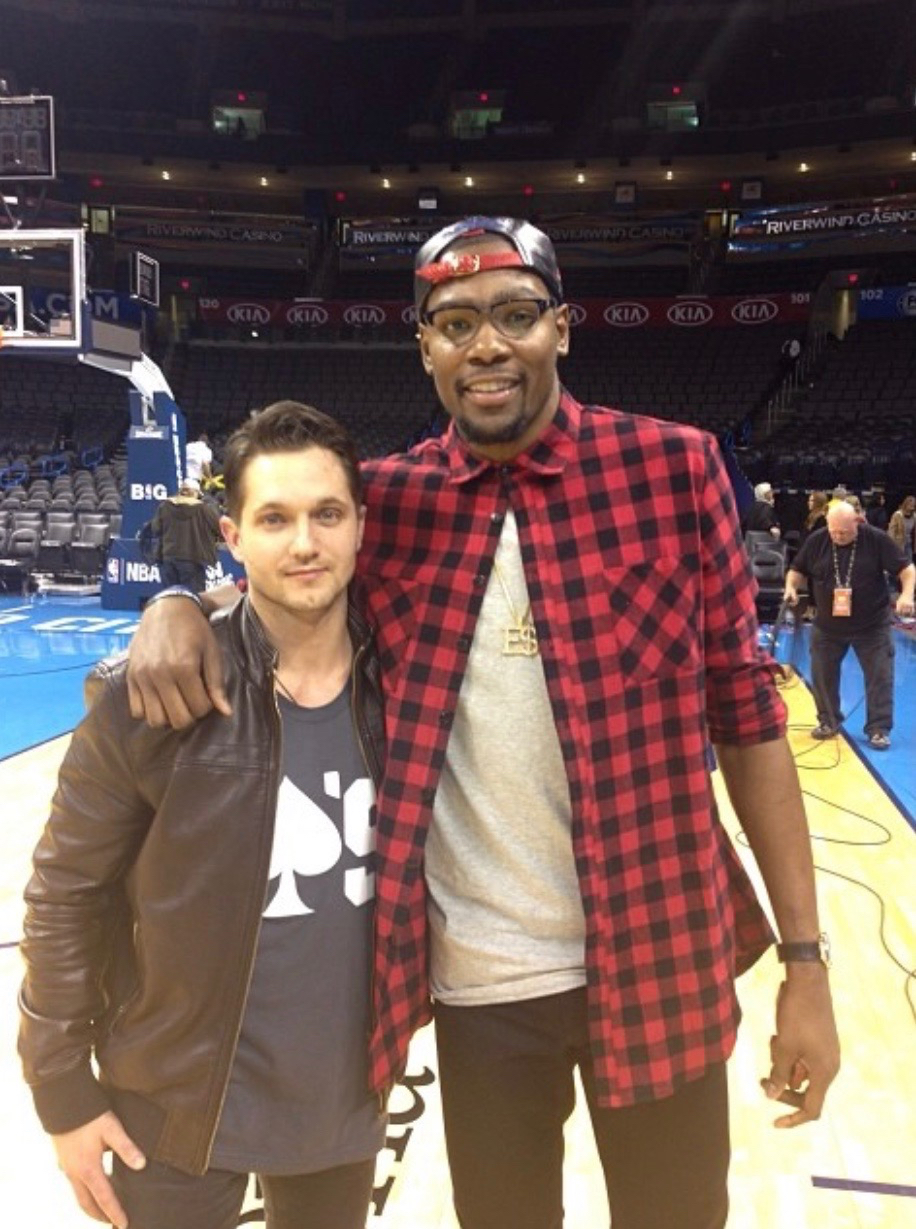
Brian with Kevin Durant in Oklahoma City. (Courtesy of Graham Bunn)
The trip cemented a friendship and gave Brian an extra boost to get him through his rehab. By February 2015, he was back to playing basketball, just in time for NBA All-Star Weekend to take over New York City.
Brian was invited to play in Nike’s pickup game for influencers at its “Zoom City” pop-up installation on Canal Street. For the first time since his injury, he played under a whistle—and on a state-of-the-art court comprised of LEDs and programmable screens, no less. With New York City legend and NBA veteran Kenny Anderson as his coach, Brian led Team Kyrie to victory with 48 points. The MVP trophy went to Common, his teammate.
Common, though, made his own correction.
“Nah,” the rapper insisted, “Smokin’ Aces is the MVP.”
In Brian’s mind, he was back. So were his NBA dreams.
That summer, he worked out with established pros, including J.R. Smith and Tim Hardaway Jr., at Jordan Brand’s Terminal 23 gym. Brian gathered video from those runs and sent it to as many teams as he could. His outreach sparked a conversation with the San Antonio Spurs, and got him tryouts with the then-D-League (now G League) affiliates of the Philadelphia 76ers and Houston Rockets.
“We had heard good things about him, his shooting and wanted to evaluate him for our minor league program, and opportunity to see if he could develop into an NBA player,” says Gersson Rosas, the Minnesota Timberwolves general manager who was an executive with the Rockets at the time. “His shooting was really good. He's a tough kid, and any time you get a profile like that, you want to make sure you follow up on all of those options.”
Brian’s efforts fell short of landing him in the NBA. For all his skills, his profile as a relatively short guard in his 30s coming off an Achilles injury made him a tough sell to fill a roster spot.
His persistence, however, helped him start building his brand.
Wherever he played (and, really, wherever he went), Brian wore clothing he’d customized with the ACES name and logo. Curious civilians and fellow hoopers alike all wanted to know what it was and what it stood for. The answers were always the same.
A platform for storytelling through apparel, predicated on hustle, heart and overcoming the odds.
“Over time, it just kept developing and developing,” he says.
Brian gave ACES product to Kevin, who wore it and posted about it on social media accounts. Brian outfitted Carmelo, who did the same.
“I never asked these guys to do this,” Brian says. “They would just post it because I think they believed in me as a person and my journey as a hooper, because these guys all knew I could play.”
That outreach set up even bigger moves for ACES. In September 2015, Brian partnered with the Venice Basketball League to put on the “Ball For A Cause” celebrity game at Staples Center, as part of a doubleheader with the Los Angeles Sparks. Former NFL stars Terrell Owens and Marcellus Wiley both played. So did Romeo Miller, along with some of Brian’s ex-AND1 colleagues, including “The Professor” and “Bone Collector.”
Thanks to his connections at Nike from his New York City playing days, everyone on the court wore jerseys with the Aces’ logo front and center.
“Right then and there, me risking putting capital up and my own money to do that got us light years ahead of the game,” he says. “And to pull it off at the iconic arena, you're on the outside looking, like, How the hell did that happen?
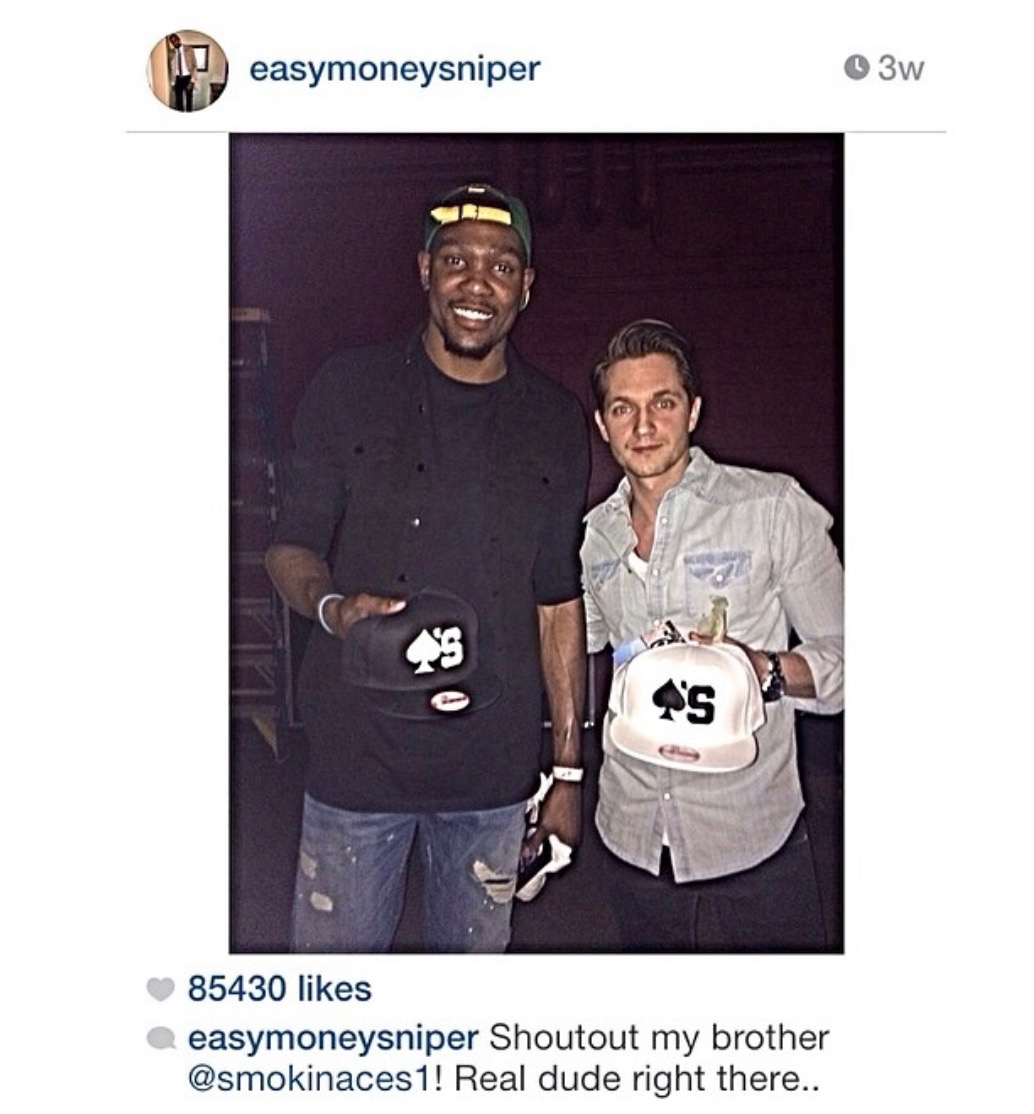
By 2017, Brian had all but ended his pursuit of an NBA contract. He still wanted to hoop, but was devoting more and more of his time, energy and passion to his brand.
He had brought the ACES celebrity game to Madison Square Garden, where Justin Bieber led a procession of stars sporting the logo. He had also partnered with the Frankie Williams Classic, where up-and-comers from the tri-state area—including Orlando Magic big man Mo Bamba and University of North Carolina star Cole Anthony—got their first exposure to the brand.
Along the way, ACES established a website and direct-to-consumer limited drops, selling out of capsule collections online.
Then, on April 2, 2017, ACES made its triumphant return to Staples Center—not in a celebrity game, but on the feet of Mike Conley Jr. That night, with the help of Patrick Hayes from the Waterhouse Hayes sports marketing agency, the then-Memphis Grizzlies point guard put up 20 points and 12 assists against the Lakers while wearing a pair of Jordan 31s, customized with the ACES logo.
“It's a sample, it's a test run, it's a proof of concept,” Brian says. “It's proven you've done it before on an NBA star, so there's instant credibility there.”
Brian credits his contacts at Nike for guiding him through the process. It helped, too, that Mike was (and still is) a fashion-forward player whose kicks regularly captured the attention of his peers. Kemba Walker, whom Brian had known from the New York City hoops scene, saw the shoes and reached out about collaborating on a pair of Jordan 10s.
P.J. Tucker, the NBA’s reigning “Sneaker King,” got in touch, too. In ACES, the Rockets forward found a natural fit to fix him up with customized Jordan 11s, and Kobe 4s and 5s.
“Once we started working with each other, you know, their motto, Heart and Hustle, that's my mantra as well, and what I believe and what I live by,” P.J. says. “It's really cool just to have somebody with the same kind of mindset, doing the same kind of thing.”
Soon enough, Aces was popping up in other leagues. In the WNBA, with Cappie Pondexter and Tamera Young. In Major League Baseball, on the cleats of C.C. Sabathia and Josh Donaldson. In the NFL, courtesy of Deshaun Watson.
“We don't just go to anybody,” Brian says. “It's select, select people. This thing has grown fast and in a proper way.”
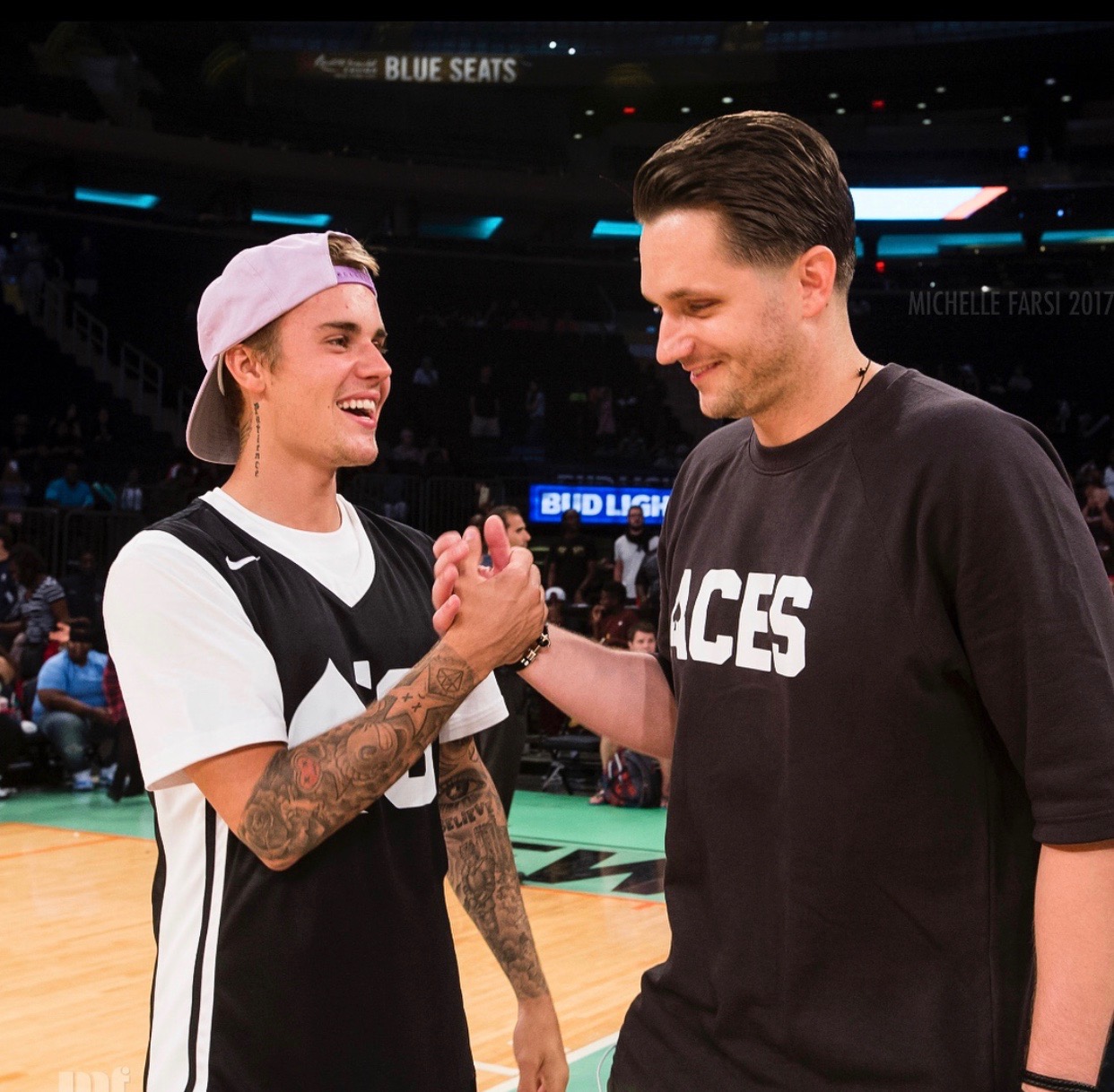
Justin Bieber played in Brian's ACES celebrity game at Madison Square Garden. (Michelle Farsi)
It’s a chilly Tuesday evening in Marina Del Rey. Brian is sitting in a conference room at a condo complex, his feet up on the table, while Patrick, the same marketing guru who connected ACES to Mike Conley Jr., is working on his laptop.
Throughout the nearly two hours he spends recounting his life story, Brian leans toward a recorder, time and again, as if to speak directly to the people he’s talking about. It’s part of his Midwest-meets-Big City charm, to be sure. More than anything, though, it’s an expression of gratitude for those who have helped him reach this point in his life, even if that coveted NBA contract will never land in front of this 30-something.
Brian still hoops from time to time, often in charity games like Baron’s, but never in his own ACES celebrity games. He still sneaks onto the silver screen on occasion, too. He played a bit part opposite Kyrie Irving’s squad in 2018’s Uncle Drew and appeared in 2019’s Blackjack: The Jackie Ryan Story, a biopic about New York City hoops legend Jackie Ryan.
Above all else, Brian is the founder and CEO of his own brand. He beams when talking about the platform he's built, and his entire team that “has been in the trenches,” working with him on business development, strategy, creative and legal. More than a decade removed from hustling on the NYMEX, Brian is more Wall Street than ever, though his metaphorical feet remain firmly planted on the blacktop.
“I think, as a competitor, I'll always have that chip, in a good way,” he says, “but the way I channel it is different. I channel it into a business CEO executive [role]. Like, all that hustle, all that heart, all that work, I can now do at a high level with my company, with my brand.”
He looks forward to more collabs with elite athletes, more capsule drops, more opportunities to tell stories through apparel.
“It's more than a piece of clothing,” he says. “It's a platform that's become a movement.”
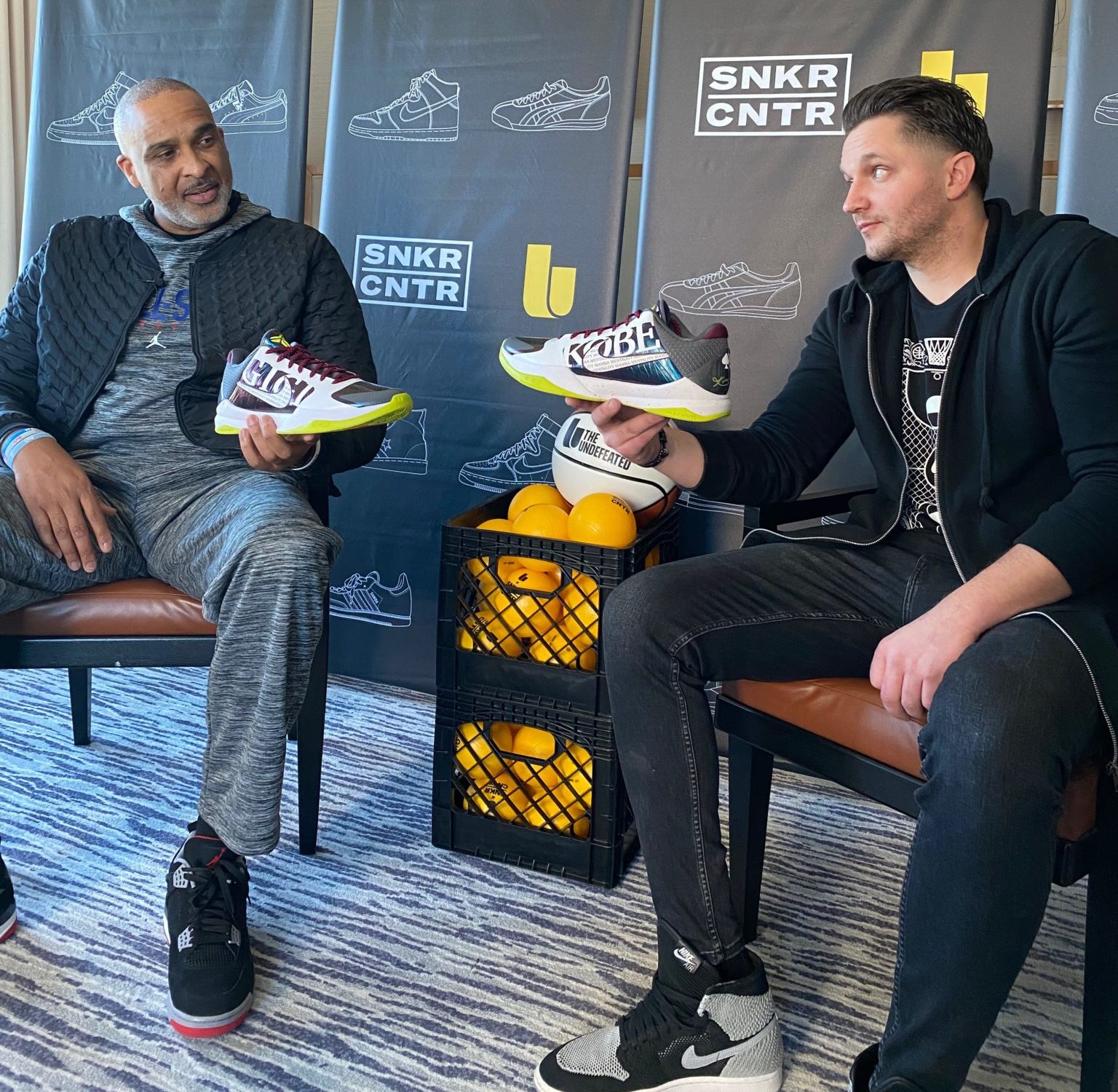
Brian designed a pair of Kobe sneakers that Lakers assistant Phil Handy wore during the 2020 All-Star Game. (Courtesy of Brian Kortovich)
As for that list of 25 goals he wrote down as a 10-year-old? Brian is fine with leaving it at 96 percent complete. Nowadays, two or three times a week, he picks up what he calls his “gratitude book” and writes down three things he’s thankful for, three things that have happened and three things that haven’t happened yet, but that he wants to manifest.
“Then I look back and, literally, 60-70 percent of the stuff happens,” he says, “whether it's an investor meeting, whether it's a brand partnership, whether it's working with an athlete, whether it's getting Nike to do one of your events. I would literally write detailed stuff down like that because I believe in the power of releasing that to the universe.”
There’s no mistaking Brian’s inner positivity. It’s always oozing out of him, as though that’s what’s keeping his hair so shiny, slick and carefully coiffed. He set out with every intention to play in the NBA and none to start a clothing company (“I wouldn’t even call myself a fashion person,” he admits).
And yet, here he is, the head of a burgeoning brand who never set foot in the Association, but counts many players, past and present, as friends and partners because, well, he’s a hooper’s hooper.
“Considering all the setbacks, all the injuries,” Brian says, “I can honestly sit here, look you in the eye and say I'm still blessed.”
Josh Martin is the Editorial Director of CloseUp360. He previously covered the NBA for Bleacher Report and USA Today Sports Media Group, and has written for Yahoo! Sports and Complex. He is also the co-host of the Hollywood Hoops podcast. Follow him on Twitter and Instagram.
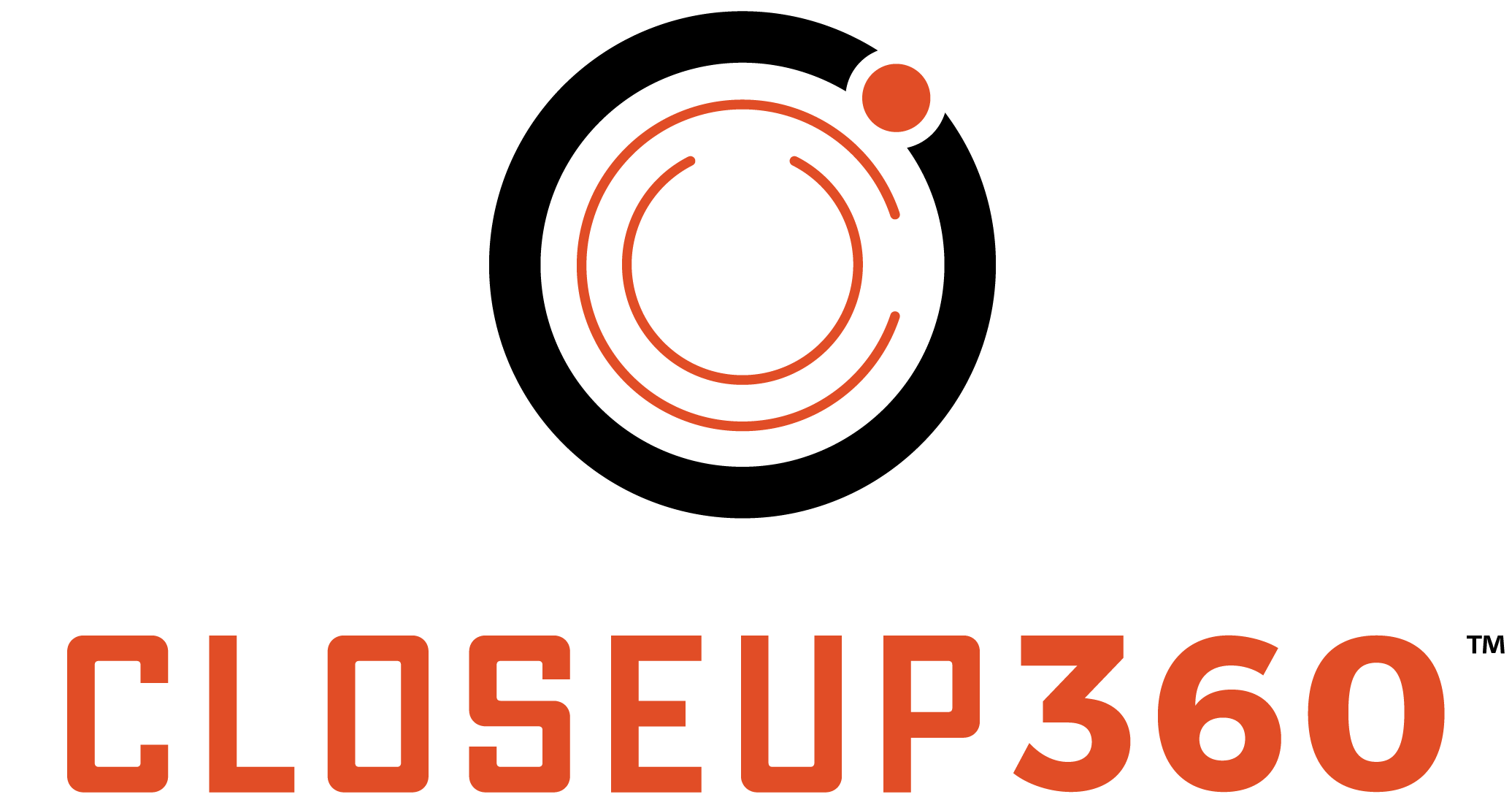
Instagram
Twitter
Error: Could not authenticate you.
Facebook
Subscribe